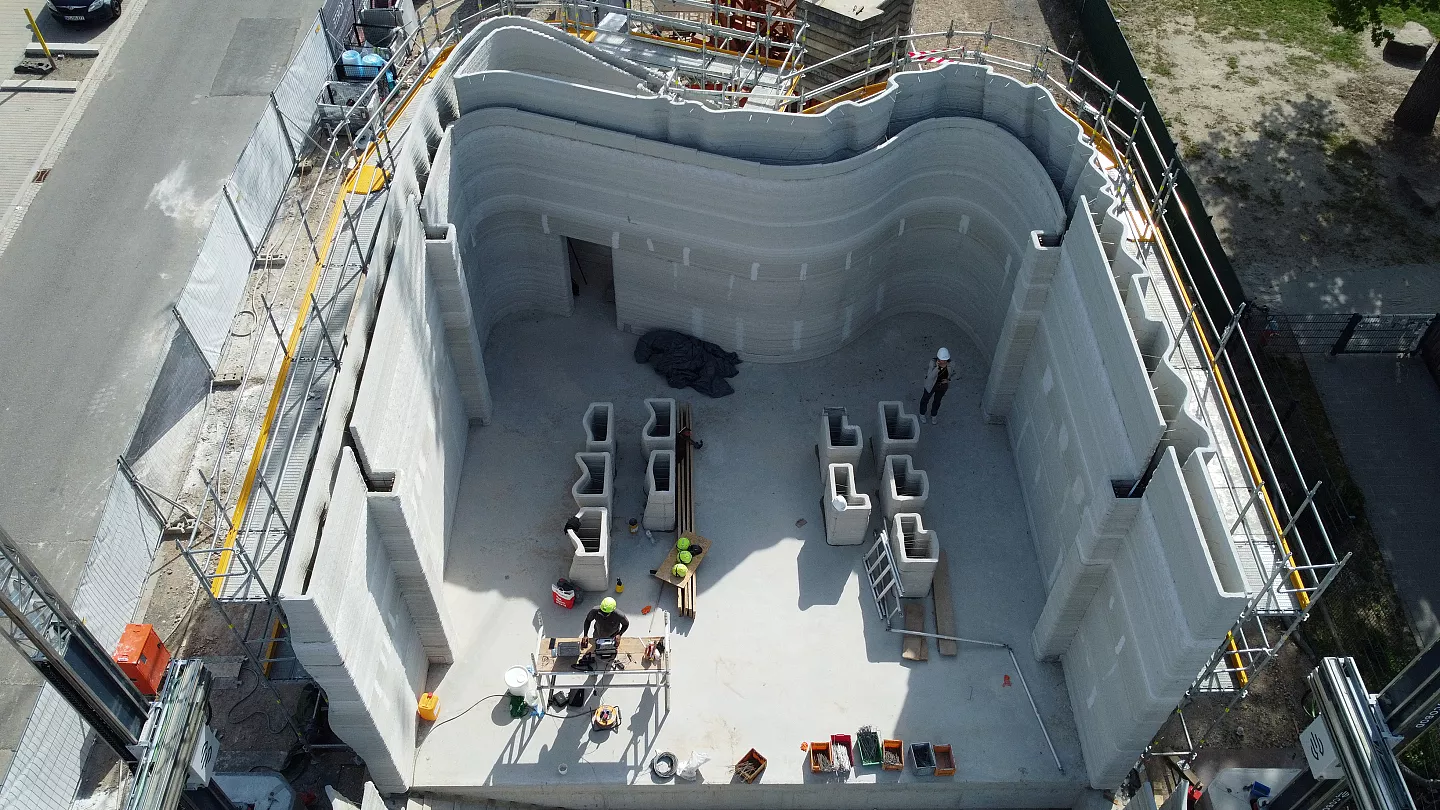The 3D-printed structure, which will hold computer servers, is anticipated to be finished by July.
In the city of Heidelberg in southern Germany, construction has begun on what is being hailed as “Europe’s largest 3D-printed building.
It will eventually hold a data center and be 55 meters long, 11 meters wide, and 9 meters high.
A massive robot that prints layers upon layers of concrete on top of one another performs the building labor that would typically be completed by dozens of human workers. Only 140 working hours are anticipated to be required for the complete operation.
It’s really creative. The creator, Hans-Joerg, suggested that at a later time, there might only be one person on the job site to ensure that nothing goes wrong.
His business, the Kraus Gruppe, claims that the concrete being used is manufactured entirely of recycled materials and will save CO2 emissions by 55% when compared to pure Portland cement, the kind of cement that is most frequently used worldwide.
architecturally curved
The building would, according to the developer, have “very special architecture” that resembles a curtain.
There will be 18-degree overhangs, which the business claims are impractical to create using standard techniques.
An aspect of a building that extends past the walls is called an overhang. In order to maintain the interior of the building dry and safe, it is necessary to offer additional protection from elements like rain and sun.
The German paint company Deutsche Amphibolin-Werke (DAW) has created a painting robot that will paint the interior of the curved structure.
By July 2023, according to Krause Gruppe, the construction should be finished.
Similar 3D-printed construction initiatives have been seen in other nations, such as China and the Netherlands.
2015 saw the construction of a prototype home by Dutch architects utilizing a massive 3D printer and plastic that was largely made from plant oil.
A five-story apartment complex and a 1,100 m2 home were 3D printed by the Chinese company WinSun in the same year using recyclable materials.
Kraus claims that while 3D printing technology may make it possible for new designs that aren’t currently possible, it won’t completely replace existing ones.
According to Kraus, 3D printing has a promising future. However, it is evident that not everything that is made in the upcoming 20 years will be produced by a 3D printer.








